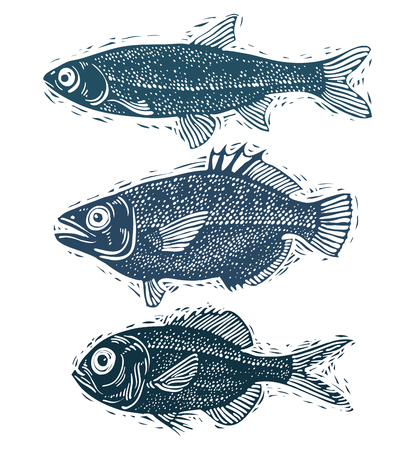Understanding Kid-Friendly Lures
When it comes to introducing kids and beginners to fishing in the U.S., choosing the right lure is crucial. Not all lures are created equal, especially for young anglers or those just learning the ropes. The best kid-friendly lures are designed with safety, simplicity, and a high fun-factor in mind. Safety means avoiding sharp hooks or complicated setups that could lead to accidents. Simplicity is about easy-to-use designs that don’t require advanced techniques—think push-and-go rather than technical finesse. And let’s not forget the fun-factor: bright colors, flashy movements, and lures that make catching fish more likely will keep new anglers excited and coming back for more. In U.S. waters, from local ponds to big lakes, these factors help ensure a positive first experience on the water and set the stage for a lifelong passion for fishing.
2. Top Beginner Lure Styles that Really Work
When you’re just getting started fishing in the U.S., picking the right lure can make or break your day on the water. For kids and beginners, some lures are easier to use and more effective than others—no fancy rod tricks required. Let’s break down three of the most beginner-friendly options: inline spinners, soft plastics, and crankbaits. Each one has proven itself time and again from Midwest farm ponds to southern creeks and big northern lakes.
Inline Spinners: The Classic Choice for Easy Bites
If there’s one lure style every American angler knows, it’s the inline spinner. Think Mepps Aglia or Rooster Tail—these little flashers have been catching bluegill, trout, and bass for decades. They’re dead simple: cast it out, reel it in, and let the spinning blade do all the work. Fish love the vibration and flash, making them perfect for kids who might not have their casting dialed in yet.
| Popular Inline Spinner Models | Best Target Species | Main Benefit |
|---|---|---|
| Mepps Aglia #2 | Panfish, Trout | Consistent action with easy retrieve |
| Yakima Rooster Tail 1/8 oz | Bass, Bluegill, Trout | Vibrant colors attract a variety of fish |
| Blue Fox Vibrax 1/4 oz | Pike, Bass | Louder vibration for murky water |
Soft Plastics: Versatile & Forgiving
No tackle box is complete without a pack of soft plastics. These baits—think curly tail grubs or stick worms—are super versatile and almost foolproof. For example, a 4-inch Senko worm rigged Texas style can catch everything from largemouth bass to crappie. Kids can bounce them along the bottom or simply let them sink; the natural motion does all the heavy lifting.
| Soft Plastic Type | How to Rig It | Main Use Case |
|---|---|---|
| Senco Worm (4”) | Texas or Wacky Rigged | Bass fishing in ponds/lakes |
| Curly Tail Grub (2”) | Jighead Rigged | Panfish, Crappie, Small Bass |
| Paddle Tail Swimbait (3”) | Weighted Hook or Jighead | Casting for bass or trout in streams/rivers |
Crankbaits: Cover Water Fast and Find Hungry Fish
If you want to help a new angler cover lots of water and find active fish fast, crankbaits are hard to beat. These hard-bodied lures wobble and dive as you reel them in, mimicking baitfish on the run. Something like a Rapala Original Floater or a small squarebill crankbait works wonders from Texas reservoirs to Wisconsin rivers. Just cast, reel steadily, and hang on!
| Crankbait Example | Diving Depth Range | Fish Attracted |
|---|---|---|
| Rapala Original Floater F05 | Shallow (0-3 ft) | Bass, Trout, Walleye |
| KVD Squarebill 1.5 | Shallow (3-6 ft) | Bass near cover/structure |
| Berkley Flicker Shad 5cm | Medium (6-9 ft) | Walleye, Crappie, Bass in open water |
The Bottom Line for New Anglers & Kids:
You don’t need expensive gear or years of experience to start catching fish in U.S. waters. With these easy-to-use lures—inline spinners, soft plastics, and crankbaits—anyone can get bites and build confidence fast. Keep it simple, stay patient, and let these proven baits do the work while you enjoy quality time by the water.

3. Targeting Popular U.S. Species
When it comes to fishing with kids or newcomers, targeting classic American fish like bluegill, bass, and trout is a surefire way to keep the action rolling and the smiles wide. These species are widespread in lakes, rivers, and ponds across the country—and the right lures can make all the difference for beginners looking to score their first catch.
Bluegill: The Ultimate Starter Fish
Bluegill are everywhere and they love to bite. For young anglers, nothing beats a small jig or a simple soft plastic grub in bright colors like chartreuse or pink. Pair these with a bobber to keep things visible and fun—watching that bobber dip never gets old. Tiny inline spinners also work wonders when you want some extra flash to draw attention in murky waters.
Bass: Big Thrills on Easy Lures
Largemouth and smallmouth bass are the poster boys of American freshwater fishing. Luckily, catching them doesn’t require fancy gear for beginners. Start with 3-inch stickbaits (like Senkos), rigged wacky style—they’re easy to cast and irresistible to bass lurking near docks or weed lines. Shallow-diving crankbaits in natural shad patterns are another solid pick, letting kids cover more water while keeping retrieves simple and steady.
Trout: Simple Lures for Stream and Pond Success
For trout, especially stocked rainbows found in community ponds or creeks, go with lightweight spoons or small inline spinners in silver or gold. These mimic tiny baitfish and provoke aggressive strikes even from finicky trout. Don’t forget about dough baits on a small treble hook if you’re fishing stocked areas—they’re a classic for a reason!
Pro Tip: Keep It Basic and Fun
The key is to use lures that don’t require complicated techniques—just cast out, reel in at a steady pace, and let the lure do its magic. Choose gear that’s easy for small hands to manage, and don’t be afraid to switch up colors until the fish start biting. With these proven lure options, every trip offers a shot at landing iconic U.S. species—and builds confidence for every beginner angler.
4. How to Rig and Cast for Maximum Fun
If you want to hook your first fish and have a blast doing it, getting your rig right is the real deal. Here’s a no-nonsense, step-by-step guide for kids and beginners that’ll get you casting like a pro—straight from the American fishing holes where everyone starts out.
Step 1: Choose the Right Lure
Stick with lures that are easy to handle and proven to catch fish in U.S. waters. Soft plastic worms, inline spinners, and small crankbaits are perfect for young anglers and beginners.
| Lure Type | Best For | Why It Works |
|---|---|---|
| Soft Plastic Worm | Ponds, lakes (bass, bluegill) | Looks real, easy to hook |
| Inline Spinner | Streams, rivers (trout, panfish) | Spins and flashes, grabs attention |
| Crankbait | Lakes, rivers (bass, perch) | Dives and wiggles, triggers strikes |
Step 2: Rigging Up Made Easy
- Tie Your Knot: Use a clinch knot—just thread your line through the lure eye, twist five times, back through the loop, and pull tight. Kids can do this with practice.
- Add Split Shot (if needed): Pinch on a split shot weight about a foot above your lure if you need more casting distance or to get deeper.
- Check Your Drag: Give your reel handle a turn—your drag should let line out with a steady pull but not too loose.
Step 3: Casting Like a Local
- Open the Bail (spinning reel): Hold the line against the rod with your finger and flip open the bail.
- Swing Back Smooth: Point your rod tip behind you at about 2 o’clock, then whip it forward smoothly to 10 o’clock.
- Let Go: Release your finger from the line as you swing forward—the lure will fly out there!
- Close the Bail: Snap the bail shut by hand to keep your line tangle-free.
Troubleshooting Common Beginner Mistakes
| Mistake | Quick Fix |
|---|---|
| Bait tangles mid-air | Smooth out your cast—don’t muscle it. |
| Lure lands too close | Add more wrist flick or use a heavier lure. |
| Knot slips or breaks | Tie knots slowly; wet them before pulling tight. |
Killer Pro Tip:
If you want even more action, try “jerking” your rod tip as you reel. This makes the lure dart around like real prey—fish in every American pond can’t resist that move!
5. Making the Most of Your First Outings
Pick the Right Local Spots
Location is everything in fishing, especially for kids and beginners. Start by hitting up well-stocked community ponds, family-friendly lakes, or urban fishing piers—these spots are often maintained with easy access and steady fish populations. Don’t be afraid to ask at local tackle shops or check your state’s wildlife department website for hot tips on kid-friendly fisheries. U.S. parks and rec areas often have special “youth fishing” zones where catching is more likely than just casting.
Time It Right
If you want to see a kid light up with their first catch, timing is key. Early mornings and late afternoons are prime time for most species, when fish are actively feeding near shorelines. Avoid blazing midday sun—it makes fish sluggish and kids cranky. Spring and early summer tend to bring the best action for panfish like bluegill and crappie, perfect targets for new anglers. Also watch local stocking schedules; many states regularly release trout or catfish into public waters specifically for family fishing days.
Keep Kids Hooked on Fishing
The secret sauce? Make it fun and keep things moving. Bring snacks, sunscreen, and plenty of patience. Use bobbers or floats so kids can see the action—nothing beats watching that red-and-white ball dance! Celebrate every bite, not just landed fish. Short sessions work best; leave ‘em wanting more instead of pushing for “one last cast.” Let young anglers try casting and reeling themselves, even if it means some tangles along the way—they’ll learn faster and feel proud of every improvement.
Pro Tips for Family Fishing Success
- Pack light—bring only essentials so you can move easily if fish aren’t biting
- Try live bait like worms or small minnows for instant results—kids love handling bait!
- Turn it into an adventure: collect cool rocks, skip stones, or spot wildlife between casts
- Remember: every trip is a win when you’re building memories out on America’s waters
The Bottom Line
Your first few trips set the tone for a lifetime hobby. By picking the right spot, fishing at the right time, and keeping it fun, you’ll hook the next generation on fishing—and reel in some awesome moments together.
6. Key Safety Tips for Young Anglers
Start with the Basics: Life Jackets and Supervision
Before any lure hits the water, make sure every young angler is wearing a properly fitted U.S. Coast Guard-approved life jacket. Even at well-known lakes or easygoing fishing piers, unexpected slips can happen fast. Never leave kids unattended near water—adult supervision is non-negotiable.
Teach Smart Casting Techniques
Kids get excited to cast, but safety comes first. Show them how to look behind and around before swinging their rod—especially with treble hooks or crankbaits that can snag skin or clothing in a flash. Practice casting in open spaces before hitting crowded docks or banks.
Gear Checks: Hooks, Rods, and Tackle Boxes
Use Kid-Friendly Lures
Choose lures designed for beginners—barbless hooks, soft plastics, and smaller spinners are less likely to cause injury. Keep sharp hooks covered until it’s time to fish, and always store tackle boxes out of reach when not in use.
Inspect Equipment Together
Make gear checks a pre-fishing ritual. Examine rods for cracks, reels for loose parts, and lines for frays. Teach kids to recognize when something’s off—this builds confidence and keeps everyone safer on the water.
Water Awareness: Know Your Spot
Scout your fishing location ahead of time. Point out any hazards like slippery rocks, deep drop-offs, strong currents, or overgrown banks. Instruct kids to stay within set boundaries and remind them not to wade into unfamiliar waters without an adult.
Sunscreen, Hydration, and Bug Protection
Packing sunscreen isn’t just for summer beach days—it’s essential for long hours by the lake or river too. Bring plenty of water and healthy snacks to keep energy up, and don’t forget bug spray to guard against ticks and mosquitoes that frequent U.S. fishing spots.
Final Word: Make Safety Part of the Adventure
Fishing should be fun—and staying safe helps everyone enjoy more casts together. When parents lead by example and keep these basics in mind, young anglers can focus on what matters most: making memories and catching their next big fish.


